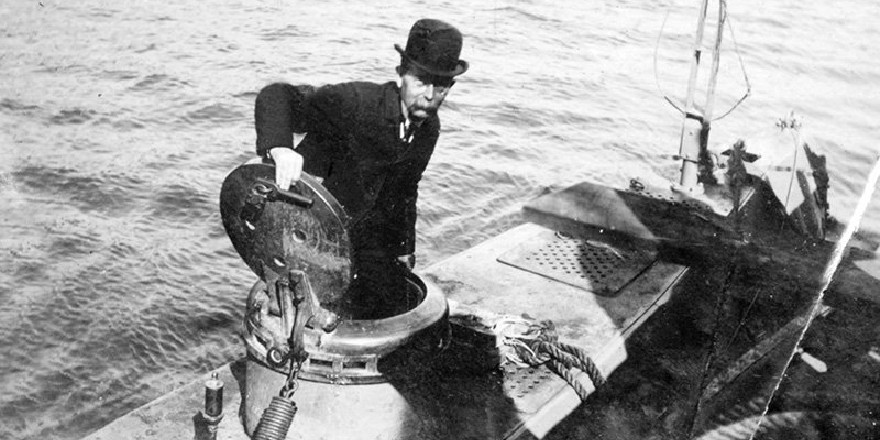Submarine: Who Invented When?
The first person to produce a real submarine by turning the submarine design into practice was the Dutch inventor Cornelius Drebbel, who worked in the palace of King James I of England in the early 1600s.

Have you read Jules Verne's novel Twenty Thousand Leagues Under the Sea? In the novel, there are sailors around the world who think that ships that were sunk in cold waters for no reason in the 1860s were sunk by a sea monster. These sailors embark on adventures to find that monster. The novel tells this... After a while, the sailors learn that it was actually a submarine named Nautilus under the command of Captain Nemo that sank the ships. So, how did the submarines, which were the subject of science fiction books and movies in the past and are seen as one of the most important tools of the defense industry today, come about, who invented the first submarine and when? Let's find out the answers to these questions together.
The idea of traveling under the sea dates back to ancient times. But the problems of how to build and operate a vehicle durable enough to move under water and how to provide the necessary oxygen for the crew remained unresolved for many years. Starting from the 16th century, entrepreneurs started to produce a solution to these problems one by one.
In the drawings made by Italian inventor Leonardo da Vinci in the early 1500s, there were sketches of a ship that could move under water, that is, the first submarine design.
The wooden-framed submarine design covered with leather, made by the English mathematician William Bourne in 1573, was based on the ballast tanks that are also used in today's submarines. It was envisaged that the submarine would fill the ballast tanks in order to submerge, and empty the ballast tanks in order to rise to the surface. However, Bourne's design did not pass the drawing stage.
The first person to turn submarine design into practice was Dutch inventor Cornelius Drebbel, who worked at the court of King James I of England. Made from a wooden boat and covered with oily leather to keep water out, the vehicle made many trips under the River Thames in 1620. The oxygen required for the crew of 12 oars on the submarine, which can dive up to 4-5 meters, was provided by heating potassium nitrate.
The first submarine used for military purposes was the Turtle, built by the US David Bushnell. The 2 meter high Turtle, which was submerged underwater in 1776, was made from oak wood. This one-man submarine, which draws attention with its coconut-like shape, was powered by hand-turned propellers. Turtle was equipped to place a time bomb on an enemy ship, thanks to the long screw mechanism on its top cover, but it was unable to sink any ship.
In the early 1800s, one of the pioneers of the steamship, Robert Fulton of the USA, developed a design that could be floated with wings or sail-like structures when on the surface, and with a hand-turned propeller under water. The submarine, which he named Nautilus, did not attract attention and was never found to be useful and could never dive into the water. However, as we mentioned at the beginning of the article, the French writer named the submarine in Jules Verne's novel Twenty Thousand Leagues Under the Sea.

Submarines needed an energy source other than a hand-turned propeller to attract attention, and an effective weapon to use against ships. The person who brought these elements together was Irish-American engineer John Holland. In 1881, Holland invented a modern submarine called the Fenian Ram, which was powered by a gasoline engine while on the water and powered by an electric motor when submerged. Continuing with his work, Holland got his money's worth and sold a 15-meter-long submarine called USS Holland, which was carrying three torpedoes (submarine weapons used to sink ships). Then he continued to build submarines for many countries.
After the 1950s, submarines began to use nuclear energy. Today, nuclear submarines, which can stay underwater for several months with each dive, come to the surface only to replenish their food supplies, as they are equipped to make drinking water and ice.
A modern submarine is designed with over 2000 engineering drawings and built using over 7 million parts.
Submarines do not have windows. For this reason, it uses sound to avoid hitting objects in the water and to detect nearby ships. SONAR systems used for this purpose emit sound waves and enable the detection of sound waves reflected back.
In submarines, the crew works in a tight environment for long periods of time in a tight space among a large number of equipment.
In many submarines, the number of beds is less than the number of crew. Therefore, half of the crew sleeps while the other half continues to work.
